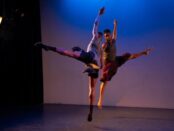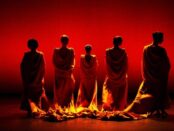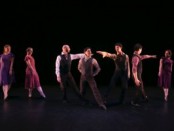White Wave: 2024 SoloDuo Dance Festival
The host company, WHITE WAVE Young Soon Kim Dance Company ended the short, well-run program with the longest work, the three-part “Eternal NOW.” It also had the most complex costumes, geometrically shaped and brightly-colored two-part outfits designed by Sarah Cubbage. Putting her seven dancers through their modern dance paces, Kim displayed skill at handling the cast, pitting soloist against groups and each other as they moved to an alternately slow and fast score by Marco Cappelli. She is someone the other other dancemakers on this lineup could look up to. [more]






